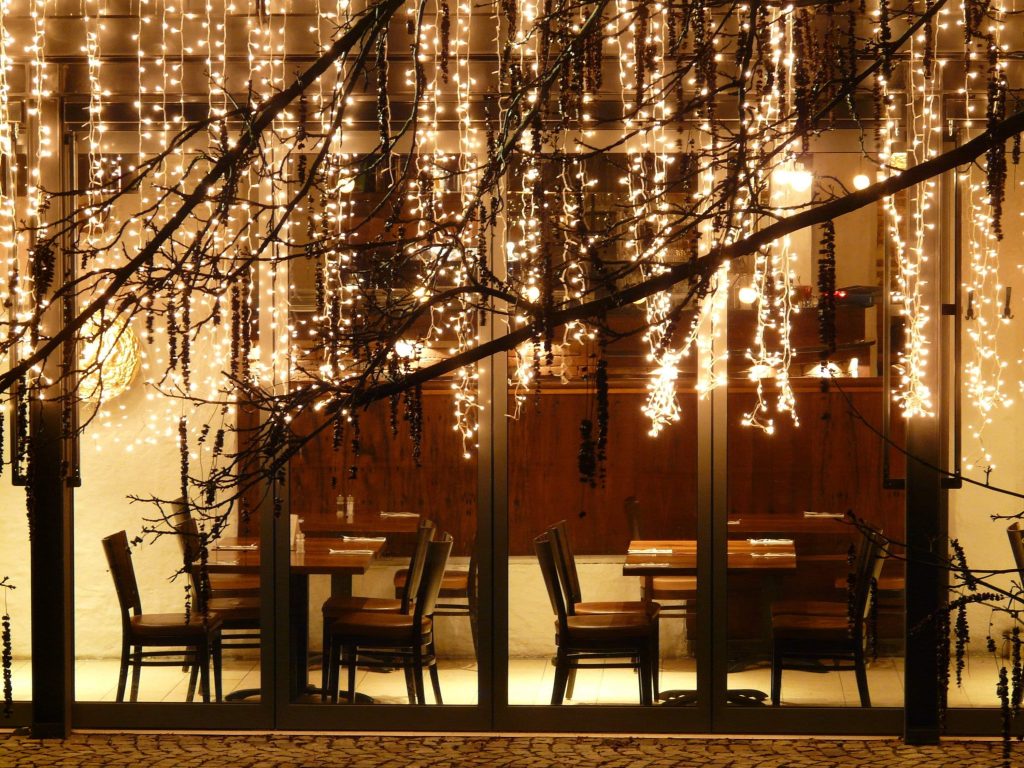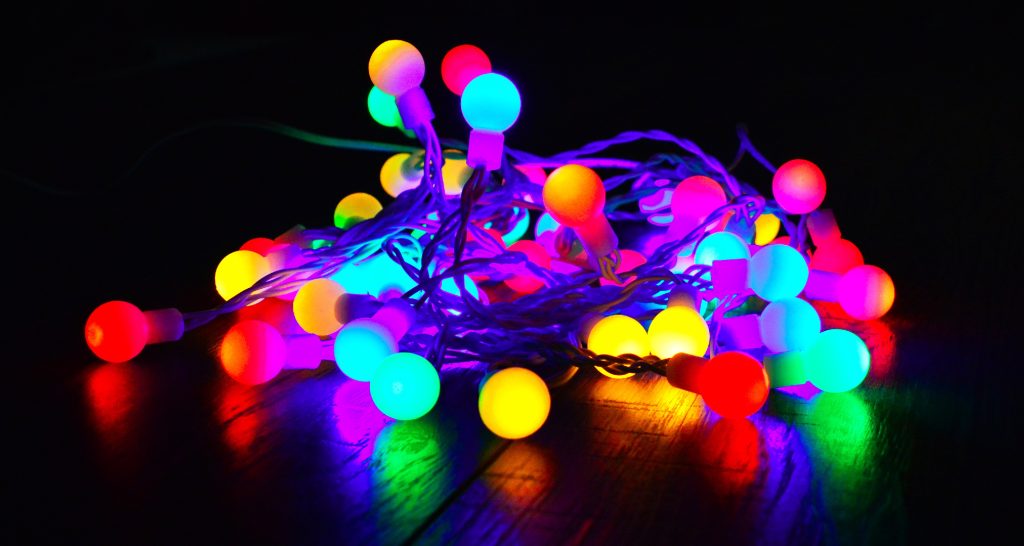Optimal Lumens for Outdoor String Lights
Delving into Lumens: The String Lights Brightness
The luminous world of lighting can be rather perplexing, with its myriad of terminologies and technicalities. One such term that plays a fundamental role in the realm of lighting is ‘lumens’. A lumen, in the most rudimentary sense, is a unit of measurement for brightness or light output. It serves as an imperative factor that determines how radiantly your surroundings are illuminated.
When it comes to lighting, lumens essentially take precedence over any other factor. Whether you’re planning to create an enchanting ambiance in your home with dim lights or intending to illuminate your backyard for a late-night barbeque party – how many lumens a light emits determines everything.
A bulb emitting fewer lumens will give off a subtler glow, making it ideal for creating cozy spaces. On the contrary, if you require bright light for tasks like reading or cooking, you would need bulbs that emit more lumens.
The importance of understanding and implementing the right amount of lumens also extends to landscape lighting. Landscape string lights not only create an inviting ambiance but also contribute to increased safety around your property at night.
By carefully considering the lumen count, one can effectively illuminate their outdoor spaces without excessively brightening them or leaving areas poorly lit. Moreover, incorporating the correct amount of lumens into your landscape lighting design reduces energy waste and promotes sustainability.
Thus making it not just aesthetically pleasing but also energy-efficient and eco-friendly. In essence, knowing about lumens and their impact on brightness helps you make informed decisions when choosing lights, which consequently enhances the functionality and beauty of your spaces.
The Sparkling Strings: Outdoor String Lights
Outdoor string lights are undeniably one of the most charming ways to light up outdoor spaces. Whether it’s a patio dinner under the stars, a backyard wedding party, or just everyday landscape lighting – these string lights can instantly transform ordinary spaces into extraordinary ones. One might marvel at the simple yet captivating charm of these gleaming little bulbs strung together.
They bring an element of warmth and enchantment to your outdoor gatherings or even quiet, solitary evenings spent in the garden. Furthermore, string lights have the potential not only to illuminate but also to enhance and define specific features within your landscape.

Outdoor string lights offer versatility like no other lighting option. They can be strung around trees, pergolas, fences, or along pathways – beautifying every corner of your outdoor setting with their soft glow. The possibilities are virtually endless when it comes to arranging these lights.
The broad array of types available – ranging from solar-powered and LED rope lights to traditional fairy lights – caters to diverse requirements and preferences. For instance, if you’re environmentally conscious and looking for sustainable options, solar-powered string lights would be ideal for you.
Ultimately, outdoor string lights are more than just decorative elements – they’re tools that allow us creative freedom in our endeavor to beautify our landscapes while providing crucial illumination where needed most.
Understanding Lumens: The Lighting Fundamentals
Before delving into the specifics of landscape string lights, it is vital to grasp a fundamental unit of measurement in the lighting world – the lumen.
The Definition of a Lumen
A lumen, in essence, is a quantitative measure of the amount of visible light given off by a source. It is used to evaluate the brightness or intensity of light emitted by any type of lamp, including LED bulbs often found in outdoor string lights. As opposed to watts that denote energy consumption, lumens specifically address the visible light output.
Lumens: The Measure of Light Output
The concept of lumens as a measure of light output can be understood better with an analogy. Picture water flowing from a tap; just as the flow rate determines the amount and pressure at which water gushes out, lumens determine how much and how bright light will be emitted from your bulb. This attribute makes them directly relevant when considering lighting options for landscape lighting.
Lumens vs Watts vs Kelvin: Understanding the Difference
When scrutinizing landscape lighting options, it’s likely you’ll encounter specifications not only for lumens but also for watts and kelvin. While these three units are interconnected in terms of characterizing light sources, they represent distinct properties.
Watts refer to energy consumption; traditionally, we’ve associated higher wattage with brighter lights, but this isn’t necessarily accurate, especially with modern LED technology, where fewer watts can emit considerable brightness.

Kelvin serves as an indicator for color temperature. Without delving into too much scientific jargon, lower values (around 2000K-3000K) give off warm colors akin to candlelight, while higher values (5000K-6500K) tend towards cool blue-white hues typically seen in daylight conditions.
Lumens, as already discussed, quantify the brightness of light output from a source. Thus, when specifying landscape string lights, understanding these units can significantly enhance your decision-making process.
The Importance of Considering Lumens When Choosing Lights
The significance of lumens in the selection process of outdoor lighting cannot be overstated. Simply put, they determine how well lit an area will be. Too few lumens might result in a dimly lit area that doesn’t serve its intended purpose, while too many could lead to unwanted harshness or glare.
For landscape lighting in particular, considering lumens is crucial, as you’re essentially painting your outdoors with light; it needs to be aesthetically pleasing while also serving functional purposes like safety or highlighting features.
With landscape string lights specifically, understanding and choosing the right lumen count can make all the difference between creating a dreamy starlit garden path or a glaringly bright soccer pitch. In essence, understanding lumens allows one to balance efficiency with aesthetics when planning outdoor lighting scenarios – an essential aspect for any successful landscape lighting project.
Unveiling the Charm of Outdoor String Lights
Outdoor string lights are one of the most versatile and delightful forms of lighting that can be used to add a magical touch to any space. These luminous gems come in an array of styles, each with its unique charm and light intensity. The four most common types are fairy lights, globe lights, LED rope lights, and solar-powered string lights.
Fairy lights are tiny LED bulbs attached to a thin wire. They emit a romantic and whimsical glow, making them perfect for creating an enchanting ambiance.
Globe lights, or festoon lights, on the other hand, are larger and more conspicuous. They offer a warm glow that is not only inviting but also adds an element of sophistication to any setting.

LED rope lights are similar to fairy lights but are encased in a clear or colored tube. This design protects them from weather elements, making them ideal for permanent outdoor installations such as landscape lighting.
Solar-powered string lights are an eco-friendly option that harness energy from the Sun during the day and illuminate your space at night.
Outdoor string light usage is incredibly diverse; they can be used for landscape lighting on garden paths, wrapped around trees or pillars for extra sparkle during festive seasons, or even strung overhead on patios or decks to create an alluring nighttime oasis.
Lumens: The Luminous Language of Light
Determining how many lumens you need for outdoor string lighting requires thoughtful consideration of various factors, such as the purpose or function of the light – whether it’s ambiance creation, safety navigation, or task-oriented – the size and type of area being lit – be it a cozy patio corner or expansive yard – and existing ambient light conditions like nearby streetlights or natural moonlight.
For instance, if you’re looking to create a subdued romantic atmosphere on your patio, using fairy string lights may suffice with just 1-2 lumens per bulb. However, if you’re aiming to light up a backyard for an evening soiree, you might consider globe lights with around 5-10 lumens per bulb.
For landscape string lights to illuminate a path for safety purposes, a brightness of approximately 50-100 lumens per fixture would be appropriate.
Decoding the Luminary Lexicon: Considerations & Implications
The lumen count in your outdoor string lights impacts more than just the brightness. It also plays a significant role in energy efficiency and sustainability. Lower-lumen lights like fairy and rope lights consume less energy compared to their high-lumen counterparts, such as some types of globe or path lights.
The brightness level also influences the mood and ambiance of your space. Lower lumens create an intimate, cozy setting while higher lumens tend to foster a lively, vivacious atmosphere – hence, it’s crucial to consider your desired effect when choosing your lumen count.
Concerning safety implications related to brightness, insufficient light can lead to accidents due to poor visibility, while overly bright lights can be glaring and cause discomfort.
Shining Examples: Real-Life Luminosity Lessons
Let’s take two case studies into view: Firstly, imagine creating a cozy patio ambiance with low-lumen fairy lights draped along with landscape string lights on surrounding shrubs or trees. This setup sets the stage for those quiet evenings where soft lighting enhances the sensory experience without overpowering it.
Alternatively, consider lighting up a garden path using high-lumen, solar-powered string lights strategically placed along the sides of the trail. This setup not only lends aesthetic appeal but also ensures people can navigate safely even after dusk falls – effectively marrying beauty and utility.
Conclusion: How Many Lumens Do We Need for Outdoor String Lights?
Understanding how many lumens are needed for outdoor string lighting may seem daunting initially; however, with careful consideration of purpose, area size, and existing ambient light, coupled with a clear understanding of various types of string lights, it’s possible to create the perfect luminous landscape that is not only beautiful but also energy-efficient and safe. And remember, lighting is not just about visibility – it’s a powerful tool to create ambiance, set the mood, and transform your outdoor space into something truly magical.
You may also be interested in the following posts:
